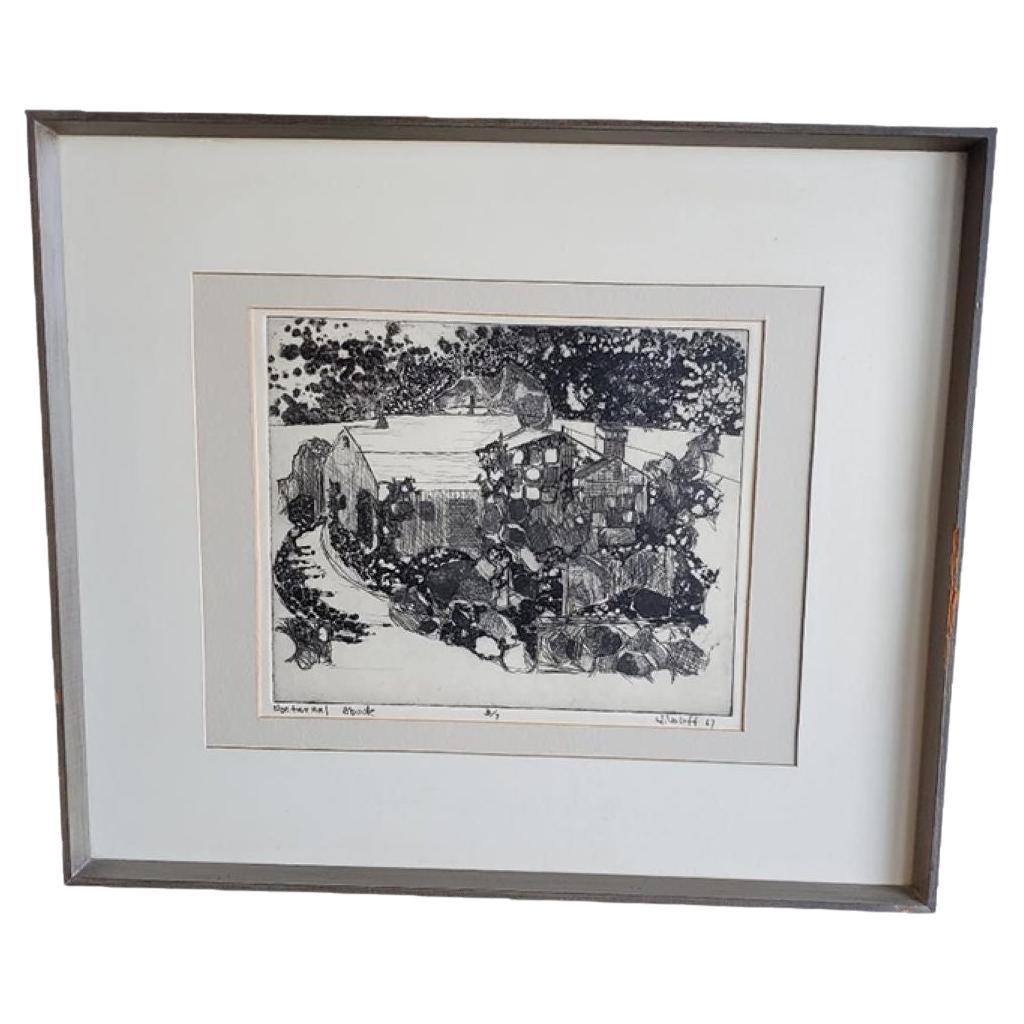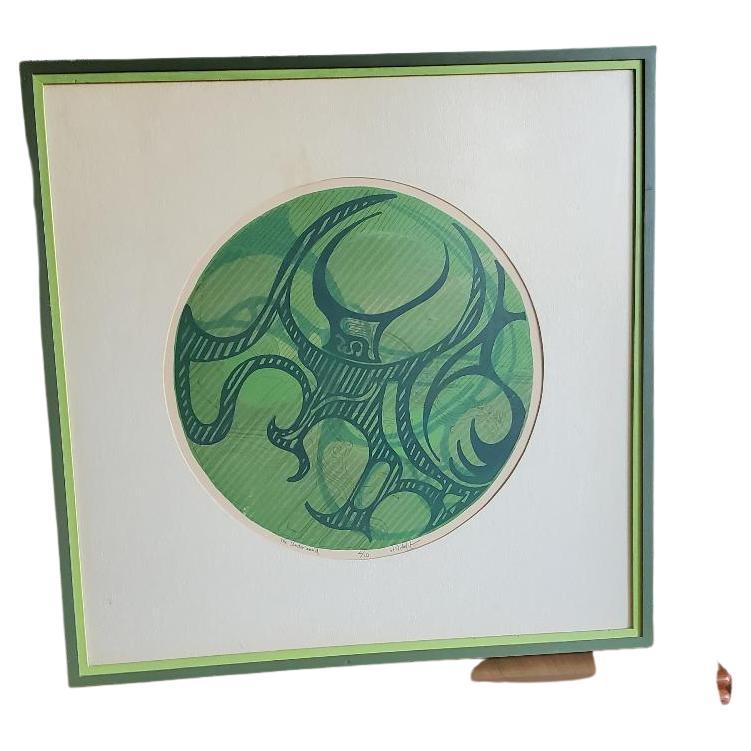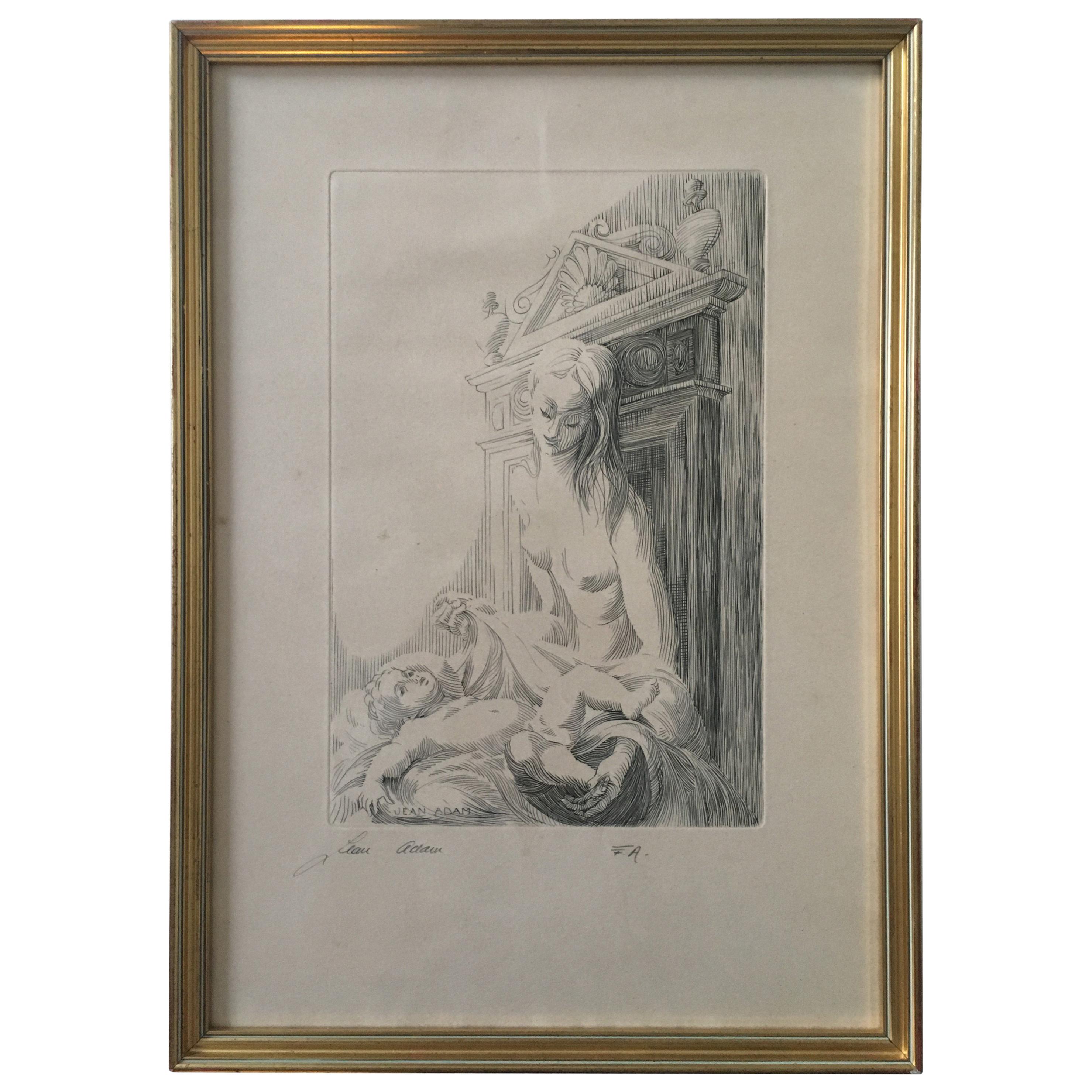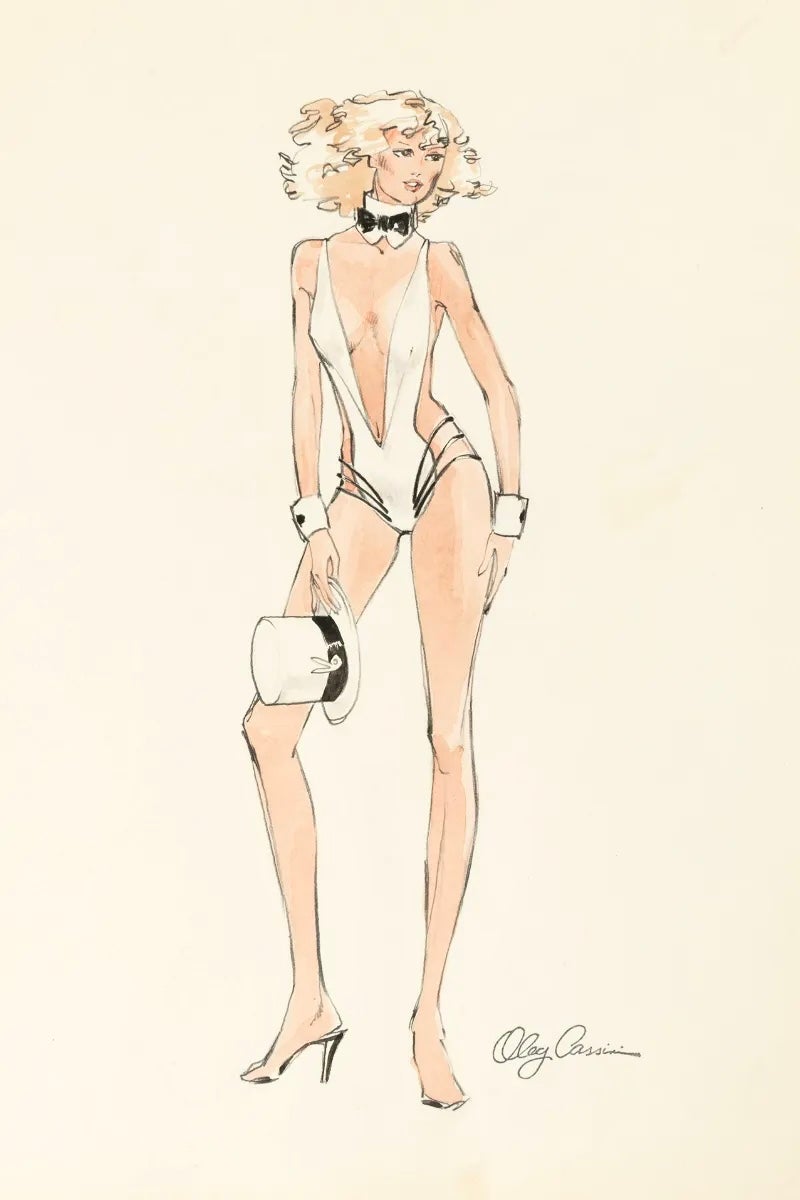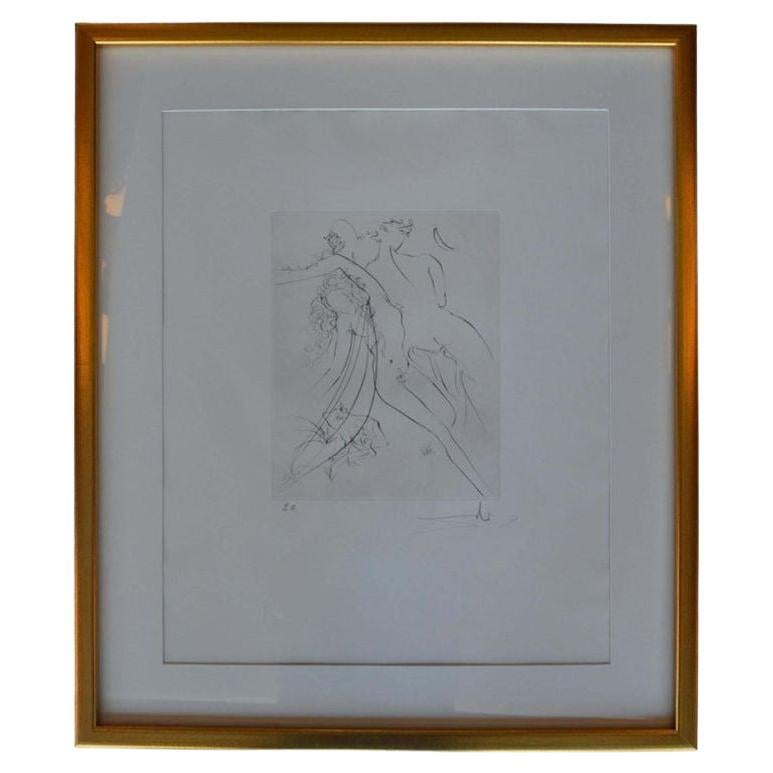Items Similar to Theatre Entrance Blueprint Signed by Thomas Lamb
Want more images or videos?
Request additional images or videos from the seller
1 of 11
Theatre Entrance Blueprint Signed by Thomas Lamb
About the Item
A movie palace facade and entrance blueprint by Thomas W. Lamb of New York. Lamb was a prolific architect and renowned for his theatre designs during the early 20th century. Some of his more famous commissions include the Lincoln Theatre in Miami Beach, the B.W. Keith Memorial Theatre (now the Boston Opera House) and the United Palace Theatre in NYC.
- Creator:Thomas W. Lamb (Designer)
- Dimensions:Height: 18.5 in (46.99 cm)Width: 24.5 in (62.23 cm)Depth: 1 in (2.54 cm)
- Place of Origin:
- Period:
- Date of Manufacture:Early 20th Century
- Condition:Fine condition, retaining old collections label from the Columbia University Libraries Manuscript Collection.
- Seller Location:NYC, NY
- Reference Number:
About the Seller
4.3
Vetted Seller
These experienced sellers undergo a comprehensive evaluation by our team of in-house experts.
Established in 2001
1stDibs seller since 2005
112 sales on 1stDibs
Typical response time: Several days
- ShippingRetrieving quote...Ships From: NYC, NY
- Return PolicyThis item cannot be returned.
More From This SellerView All
- "Comforts of Bath" Seven Satirical Prints by Thomas RowlandsonBy Thomas RowlandsonLocated in NYC, NYSeven prints from the 1857 re-edition of Thomas Rowlandson's visual satire "The Comforts of Bath". Each print by the famed British caricaturist chronicles an escapade of the prot...Category
Antique 19th Century British Prints
- Large Abstract Drawing by G. Bradshaw-SmithBy Gillian Bradshaw-SmithLocated in NYC, NYA large fine pastel drawing of an abstract figure from the Cordier and Ekstrom Gallery, Madison Avenue, New York by Gillian Bradshaw-Smith.Category
Vintage 1970s American Drawings
MaterialsPaper
- "Dogwood" Photograph by Sung AnBy Sung AnLocated in NYC, NYA photograph by Sung An of the dogwood flower native to eastern North America.Category
21st Century and Contemporary American Photography
- Photograph by David SeidnerBy David SeidnerLocated in NYC, NYA photograph of coral with a identification tag by world famous photographer David Seidner. Framed. Ex: Phillip de Pury Auction House. David Seidner Biography. 1957 Born in Los Angeles, CA. 1976 Was 19 when his first cover photograph was published in Paris. 1986 In 1986 he was commissioned by the Musee des Arts de la Mode in Paris to photograph costumes from its collection. 1980 - 1989 In the 1980s he was under a contract with Yves Saint Laurent. 1999 Died in Miami, FL. 1999 Given Eisenstaedt Award for Portrait Photography by Life magazine and Columbia University. 2000 The International Center for Photography in New York houses the David Seidner Archive, a complete collection of the artist's work. Selected exhibitions. 2008 - 2009 David Seidner Photographs, Fondation Yves Saint Laurent and Pierre Berge, Paris. 2006 Pia Getty, David Seidner, Contemporary Faces, London. 2000 Paul Morris Gallery, Orchids, New York. Maison Européenne de la photographie, Paris, Retrospective. 1999 Baldwin Gallery, Orchids, Aspen. Staley Wise Gallery, David Seidner 1957-1999, New York. 1996 Maison Européenne de la photographie, Visages de l’art contemporain, Paris. 1995 Robert Miller Gallery, Nudes, New York. Feature Inc, New York. 1993 Robert Miller Gallery, Portraits of Artists, New York. 1989 Samia Saouma Gallery, Paris. 1986 Musée des arts de la mode, Moments de Mode, Paris. 1985 Samia Saouma Gallery, Paris. 1983 La Remise du Parc, Paris. 1982 La Remise du Parc, Les chaussures de Tokio Kumagai...Category
Late 20th Century American Photography
- Untitled Painting by Dede CooverBy Dede CooverLocated in NYC, NYAn original, large-scale, abstract oil on canvas painting by American artist Dede Coover, a registered and award winning artist since the 1950s. The artist, native to California, has...Category
Mid-20th Century American Paintings
MaterialsCanvas
- "#2711" Painting by Richard MannBy Richard MannLocated in NYC, NYA large Richard Mann acrylic painting on masonite with blue, white, yellow and madder lake green .The piece is titled #2711 and signed R. Mann.Category
Mid-20th Century American Expressionist Paintings
MaterialsAcrylic, Masonite
You May Also Like
- 1967 Etching Titled, Dated, Signed "Nocturnal Abode" #3/7 by Artist H ValoffLocated in Monrovia, CAVintage 1967 original etching named signed and numbered "Nocturnal Abode" #3/7 H. Valoff 1967. 1967 Original etching by Artist H. Valoff Is Framed And Ready To Hang. Nocturnal Ab...Category
Mid-20th Century American Drawings
MaterialsPaper
- Eagle Bust Signed Limited Edition Original Lithograph by Robert BatemanLocated in North Hollywood, CAVigilance Prestige Limited Edition, October 1993, eagle bust signed limited edition original lithograph, hand signed and numbered by Robert Bateman. pa...Category
Late 20th Century Expressionist Drawings
MaterialsPaper
- 1960s Etching Titled, Signed Numbered "The Underworld" 4/10 by Artist H. ValoffLocated in Monrovia, CAVintage 1960s original etching titled, Signed and numbered "The Underworld" #4/10 H. Valoff 1960s. 1960s original etching by artist H. Valoff is framed and ready to hang. The und...Category
Mid-20th Century American Decorative Art
MaterialsOther
- Original Neoclassical Etching by Listed French Artist Jean Victor Adam, SignedLocated in Miami, FLA very fine original etching (epreuve d'artist, essay) by French listed artist Jean Victor Adam. Jean Victor Adam (1801–1867) was a French painter and lith...Category
Antique 19th Century French Drawings
MaterialsPaper
- White Bunny Drawing by Oleg Cassini for Playboy October 1979, SignedBy Oleg CassiniLocated in Brooklyn, NYWhite Bunny Drawing by Oleg Cassini for Playboy October 1979, Signed. Illustration of a woman wearing a white body suit, choker, and hat. Signed by Oleg Cassini. Notice the body suit is in the shape of the head of a bunny with clever use of the 'whiskers'. Approximate Measurements: Length: 11" Width: 14" Property from the Collection of Steven Rosengard, Chicago, Illinois This original drawing was commissioned by Playboy and included in the October 1979 issue of Playboy Magazine (pages 225-227) in a feature that included works from designers such as Bill Blass, Oleg Cassini, Edith Head, Fernando Sanchez, and Monika Tilley, among others, who create their versions of the Playboy bunny costume. Candace Collins can be seen modeling some of the designs in the feature. Oleg Cassini is an icon of twentieth-century fashion. Though born to Russian aristocracy and raised in Italy, he built a fashion empire that was unmistakably American. Cassini is perhaps best known for the hundreds of designs he created for First Lady Jacqueline Kennedy (see images 4-8), but his achievements as a collector, connoisseur, and quintessential twentieth-century man go far beyond Camelot. In 1913, Oleg Cassini was born in Paris to the Russian diplomat Count Alexander Loiewski and Countess Marguerite Cassini, a Russian aristocrat of Italian ancestry who also had an interesting link to America. The daughter of Count Arthur Cassini, Russian Ambassador to the United States during the McKinley and Roosevelt administrations, Marguerite dazzled turn-of-the-century Washington as her father’s official hostess and left her mark on the capital city. Stationed in Denmark when the Russian Revolution toppled the czar, Ambassador Cassini and family were exiled to Switzerland before settling in Florence, Italy, where young Oleg was raised. A true Renaissance man, he spoke Russian, French, and Danish before adding Italian and English; he studied medieval and modern European military history and costume and learned to draw; he learned horseback riding, fencing, and the art of chivalry; and, most importantly, he came to understand the struggles of the Russian titled class and other European aristocrats in the wake of the Russian Revolution and World War I. Countess Cassini started a successful fashion business in Florence, and soon the talented young Oleg was sent to Paris to sketch the latest collections for recreation in Italy. In Rome in his early 20s, Cassini created fashions for high society women and designed for a few films, which planted the seed for his move to Hollywood. The drive to reinvent himself brought Cassini to America in the 1930s; in his autobiography he describes arriving nearly penniless in mid-Depression New York City where his title as an exiled Russian Count meant even less than in war-devastated Europe. Down and out, Cassini struggled for employment, having sketching skills but no knowledge of the wholesale trade required for survival in Manhattan’s Seventh Avenue fashion district. However, he excelled at making connections, and Cassini slowly entered New York society. He was soon joined by younger brother Igor (who had studied in America and travelled with the young Emilio Pucci) and his parents, the once-dazzling Countess and his father, the displaced diplomat still loyal to Russia. The family settled in Washington, D.C., and Igor worked his way up the Hearst newspaper chain to become the famous society columnist Cholly Knickerbocker. In New York, Oleg Cassini married the troubled socialite Merry Fahrney (who would go on to marry eight times), but the marriage ended in scandal for Oleg, and he decided to follow his original intention and head for Hollywood. Despite initial difficulties, Cassini gained access to Hollywood’s elite (partially through his skills on the tennis court), and was soon hired as a designer at Paramount Pictures alongside the redoubtable Edith Head. In her 1941 film debut I Wanted Wings, Veronica Lake wore a memorable Cassini design. That same year, Cassini met and married the newest young Hollywood star on the scene, the beautiful 20th Century Fox–talent Gene Tierney. With the outbreak of World War II, Cassini enlisted in the Coast Guard but was transferred to the U.S. Army Cavalry which allowed officers of foreign birth. He attended basic training at Fort Riley, Kansas, and the horsemanship he learned as a boy served him greatly. He attended Officer Candidate School and reached the rank of First Lieutenant (he also became an American citizen at this time, losing his title of Count). Cassini spent several years posted at Fort Riley, where Tierney joined him before he landed a convenient military post in Hollywood. As Tierney’s career thrived (she played the title role in Otto Preminger’s Laura in 1944), she was able to assert her influence over 20th Century Fox’s head Daryl Zanuck, who hired Cassini as designer for Tierney on her 1946 film The Razor’s Edge, which proved to be a brilliant showcase for his talents. The pair separated the same year and, again seeking reinvention, Cassini re-established himself in New York City as a fashion designer. By 1950, the Oleg Cassini label was born. Combining his knowledge of Old World and modern Europe, Hollywood, the tennis courts of Palm Beach and Newport, and of course, New York City, Oleg Cassini invented a new brand of fashion that was distinctly American and of its moment. For his first collection, Cassini took to the stage, narrating the looks and imbuing the scene with his personality, unusual in an industry where the designers typically remained backstage and the models were called by number over a PA. The first collection was a smash — the president of Lord & Taylor devoted all of their storefront windows to his designs — and by 1955 sales had reached $5,000,000. Oleg Cassini’s career had turned a very positive corner. Cassini spent the early 1950s traversing the country, personally selling his collections to department stores in the interior, something his predecessors had never done, and moving between the Hollywood and New York scenes. Cassini’s brother Igor coined the term “the Jet Set” for this generation that constantly flew from New York to Los Angeles (then a ten-hour flight), Las Vegas, Paris, Rome, and the Riviera. In 1954, Cassini set out to woo Grace Kelly and sent her roses every day. The two were briefly engaged before her marriage to Prince Rainier of Monaco. In December 1960, Cassini’s career-defining opportunity came when he was chosen by Jacqueline Kennedy to design her fashions for the White House. Cassini had long known Joe Kennedy and his war-hero son John, and had first met Jacqueline Bouvier before her marriage in the early 1950s. Invited by President-Elect Kennedy to meet Jacqueline at Georgetown Hospital (she had just given birth to son John Jr.) to present to her drawings of potential dresses and First Lady looks, Cassini worked furiously to prepare a new line for the First Lady. Mrs. Kennedy had always had her clothes made by the top French couturiers of the day, but for the White House she wanted an American designer. Cassini wrote in his autobiography that he told the First Lady: “‘You have an opportunity here,’ I said, ‘for an American Versailles.’ She understood completely what I was trying to communicate; she began to talk excitedly about the need to create an entirely new atmosphere at the White House. She wanted it to become the social and intellectual capital of the nation” (Oleg Cassini, In My Own Fashion, 1987, p. 327). Mrs. Kennedy loved Cassini’s design for a gown to wear to the Inaugural Gala (she had already ordered a dress from Bergdorf’s for the Inaugural Ball), and Cassini was selected as the First Lady’s designer and was soon dubbed the “Secretary of Style.” From 1960 to 1963, Oleg Cassini would design over 300 items for Mrs. Kennedy, creating the “Jackie Look” that contributed not only to a fashion revolution but also the dawn of a new age. Cassini wrote that “Jackie played a very active role in the selection of her clothes. She loved brilliant colors — pistachio, hot pink, yellow, and white among others. Her sense of style was very precise; she would make editorial comments on the sketches I sent her. She always knew exactly what she wanted; her taste was excellent” (Oleg Cassini, In My Own Fashion, 1987, p. 334). After the Camelot years, Cassini’s business flourished and grew into a major industry; his name appeared on everything from couture to tennis-, sport-, and swimwear, car interiors, housewares, and perfume. He collected beautiful and rare artwork, arms and armor, and antique furniture, and lived the lifestyle projected by his image. From this period onward, Cassini also came to live in important homes. Of his Gothic Gramercy Park townhouse on Manhattan’s 19th Street he would write imaginatively, “I walked into the foyer and immediately fell in love. It was a place unlike any other in New York, a sixteenth-century Dutch house transported brick by brick from Europe by the Wells Fargo family in the early twentieth century. There was a vaulted, twenty-foot ceiling in the living room, leaded windows, elegantly carved wood paneling...Category
Mid-20th Century Italian Drawings
MaterialsPaper
- Salvador Dali Signed LithographBy Salvador DalíLocated in Los Angeles, CASalvador Dali Signed Lithograph, 1970s.Category
Vintage 1970s Spanish Drawings
MaterialsPaper
Recently Viewed
View AllMore Ways To Browse
Architect Blueprint
Used Furniture Lincoln
Theatre Wall
Antique Furniture In Nyc
Movie Sign
Miami Beach Furniture
Antique Movie
Antique Furniture Lincoln
Movie Theatre
Antique The Movie
Miami Beach Antique
Mid Century Wall Mounted Sculptures
1960s Vintage Accessories
Original Vintage Advertising
Shape Charm
Round Leather Top
Poster Roll
House Coat
